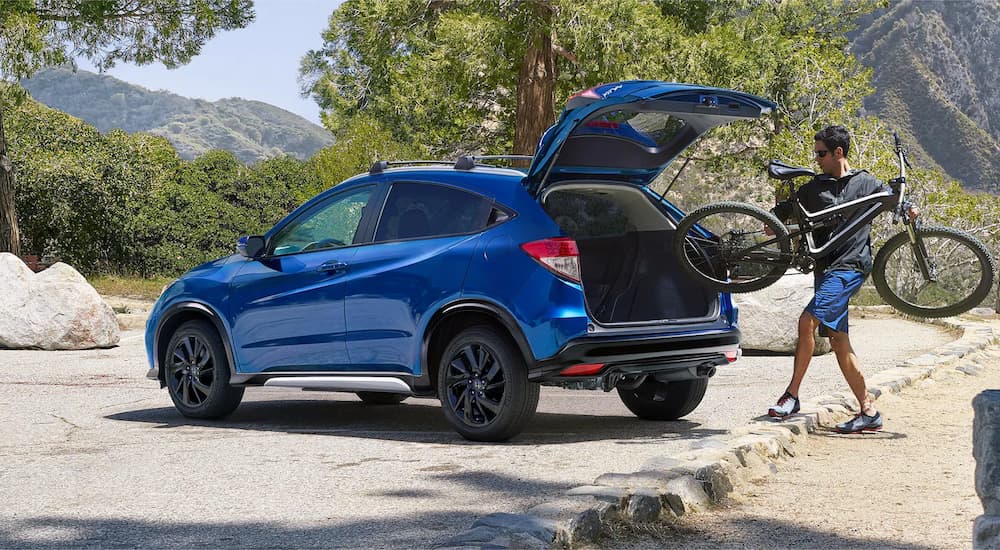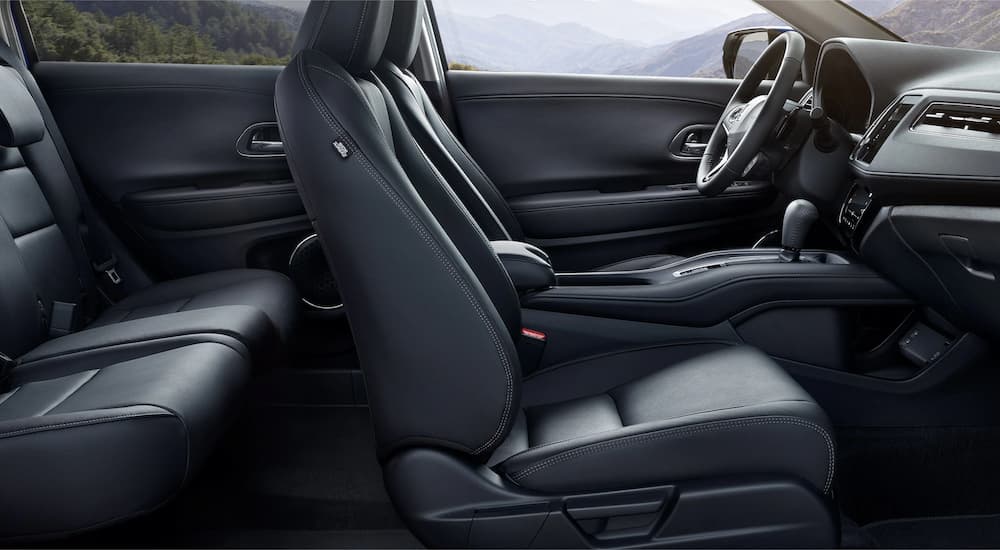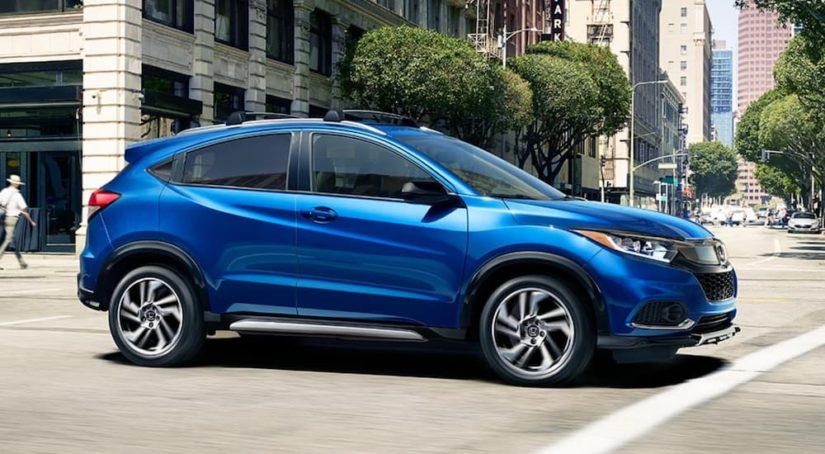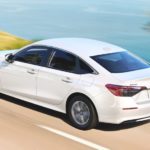Searching through reviews while trying to get a feel for what the industry pulse is regarding a model you currently have your eye on is something many car-shoppers tend to do. However, as is the case with even top-segment leaders, it’s likely the vehicle you choose will have some “cons” to consider. Manufacturers must focus on what they deem most important for their builds in a particular category, and that means drawing the line in some areas to keep costs affordable within that class. With this in mind, it’s basically unreasonable to find a model that hasn’t registered at least some negative feedback from auto critics. One aspect of the 2022 Honda HR-V managed to land in the “con-column” on all the usual-suspect sites, but as you’ll see in the following paragraphs, the “pros” appear to markedly outweigh the negative, making the 2022 Honda HR-V one of the most desirable entries in the entire sub-compact SUV class.
The Aforementioned Con
Certain brands, such as Honda, have given us a decades-long sample size of smart, reliable vehicles, which allotted the Japanese automaker a well-earned and loyal following. Therefore, it’s only natural to pass out a mulligan or two when contemplating any critic-penned cons of a particular Honda model. As far as the 2022 Honda HR-V goes, the bottom line is this: the HR-V – commonly judged as slow-from-the-go, less-than-stellar when it comes to sporty handling, a somewhat poor accelerator, and even a tad noisy – simply wasn’t designed to satisfy high-performance needs.
Yes, the HR-V engine choices are as lean as it comes. Across the board of trim levels is a singular, 1.8L, inline 4-cylinder (I-4) engine with what can only be described as (by today’s appetite) a paltry 141 hp and even lower torque that goes zero-to-sixty in……well, that’s not so important. What is notable is the host of features that are an encapsulation of practicality, something often associated with Honda vehicles.

The Con Has Pros Too!
The 1.8L powerplant isn’t without its good points; trusted Honda motor-works technology comes included:
A Single OverHead Cam (SOHC) motor with an Intelligent Variable Timing Electronically Controlled (iVTEC) valve-timing system. It uses a 2-stage camshaft process which only employs higher oil pressure and keeps valves open longer when the gas pedal is mashed. The “i” in iVTEC refers to the engine’s ability to dictate valve timing at lower RPM, thus improving throttle response, efficiency, and performance in Honda’s unique version of this engine technology.
Despite the likelihood of finishing near the back of the pack when it comes to a short drag race, the 1.8L SOHC engine will get you farther with a very respectable 28 MPG city and 34 MPG highway. Coupling that with other features such as Honda’s Continuously Variable Transmission (CVT), eco-friendly catalytic converter, and a high-performance air flow sensor will help increase efficiency, better manage fuel consumption, and expel fewer emissions. So, while a turbo or the advantages of a bigger displacement are not available, you do get a powertrain that helped the Honda HR-V achieve a reliability score that’s a smidgen under “Great” in J.D. Power’s Quality & Reliability ranking system.
Cargo Magic
If you’re not familiar with Honda’s Magic Seat cargo-mode application, you’re going to want to check out this innovative interior feature, exclusive to Honda within the class. The versatility of this handy system is displayed in the following mode breakdown:
- Tall Mode – Rear headrests are removable, allowing the bench seat to be folded up, spawning a sweet 48-inch space from floor to ceiling for transporting taller items
- Long Mode – Both front and rear passenger seats fold down, creating an elongated space from the dash to the rear door that can accommodate cargo, such as a rolled area rug or surfboard.
- Utility Mode – The rear seat folds down, creating a remarkable 52 cubic feet of space, which will easily transport a normal-sized 10-speed bicycle and more. Even the cushions on the seats are adjustable to add a bit more space.
The available room in Utility Mode exceeds the majority of its segment competition and can hold its own with some larger crossovers as well. If you consider the HR-V has nearly half a foot more rear legroom than its arch-rival Toyota offers, the overall roomy and versatile interior provides a little irony in that the HR-V is Honda’s smallest production vehicle.

A Safe Bet
Perhaps the best attribute of the 2022 HR-V is a continuation of safety excellence perennially found in Honda automobiles. The 2022 HR-V scored a top-of-the-line, 5-star overall safety rating from the National Highway Traffic Safety Administration (NHTSA) and makes its segment presence known with outstanding scores in safety categories. Although Honda offers four trim options, it’s recommended to choose either the EX or EX-L models to take full advantage of all the comprehensive safety features – such as Honda’s Sensing Suite technology – which is only standard on those two trim levels. The Sensing package is jammed with impressive driver-assist tools like:
- Adaptive Cruise Control (ACC) – Maintains a determined safe distance interval from the vehicle in front of yours.
- Collision Mitigation Braking System (CMBS) – Honda’s patented combo of a radar transmitter and front-facing camera determines the distance and closing speed of approaching objects, alerts the driver via audible and visual warnings, and will apply appropriate braking to help reduce impact.
- Road Departure Mitigation (RDM) – Via camera assistance that identifies road lines that separate lanes, RDM warns the driver with visual and audible warnings and will correct steering or apply brakes in the event a driver fails to respond
- Lane Keeping Assist System (LKAS) – Small camera mounted above the inside rearview mirror actively helps keep the vehicle in the desired lane.
- Forward Collision Warning (FCW) – Among the very best tech in the industry, it determines if a detected vehicle is a possible collision threat by analyzing the speed of both vehicles and will provide an audible beeping sound and visual flashing “Brake” alert.
Collectively, this is a no-brainer must-have for the safety-conscious – especially if your precious cargo frequently includes children and loved ones.
Objective Final Thoughts
Looking through a purely reasonable lens, the 2022 Honda HR-V pretty much falls squarely within (expected) traditional aesthetic interior and exterior lines. Consequently, the available options for the HR-V EX and EX-L models are capable of providing a sensible and classy cabin – likely adequate for most buyers who also appreciate all that the HR-V offers. For a reasonable starting price, you can roll with a new HR-V that, while it may be judged a bit mundane in some aspects, clearly has a lot of foundational safety, quality, reliability, and re-sale aspects that make it an attractive consideration.
As the 2022 model starts to saturate the market in the coming months, the potential for deals and incentives will only increase as the 2023 HR-V nears a roll-out. For 2023, Honda will likely address the power issue, but it’s not yet clear what direction they may go. The Euro models will include a hybrid powertrain currently shared with the Honda Insight and Accord. That would be a nice addition for HR-V buyers in the U.S., as would improvements to handling and a slightly modernized interior. After all, other sub-compact SUV makers such as Mazda, Kia, Hyundai, and Buick are stepping up their game, and Honda may be feeling a bit of heat to follow that lead. But 2023 aside, the 2022 version offers plenty and emits a familiar air of value and Honda quality.



